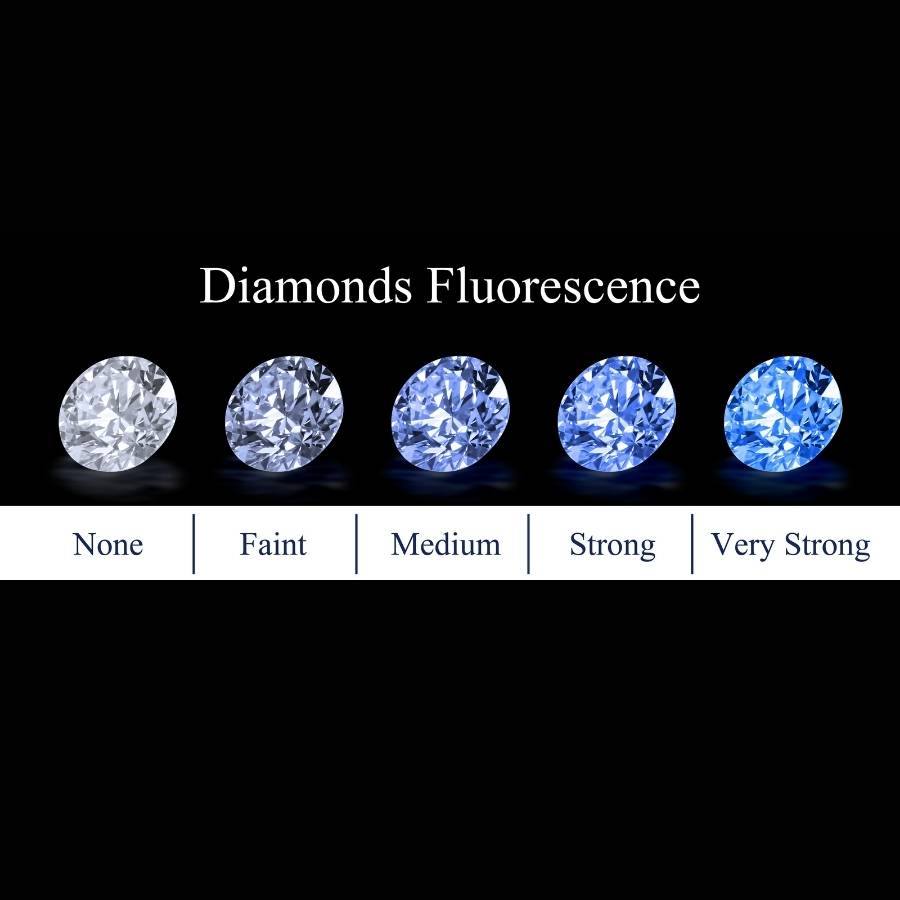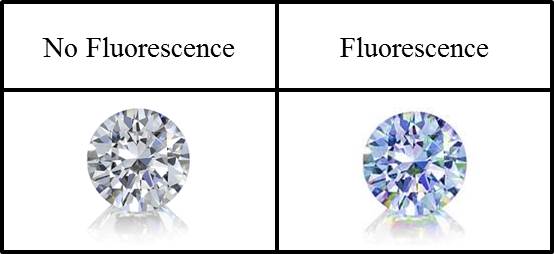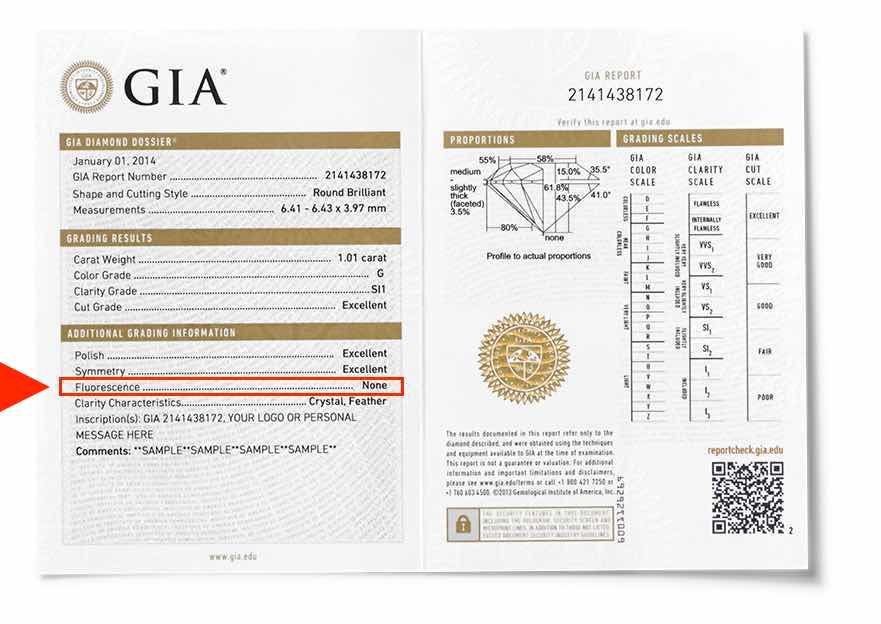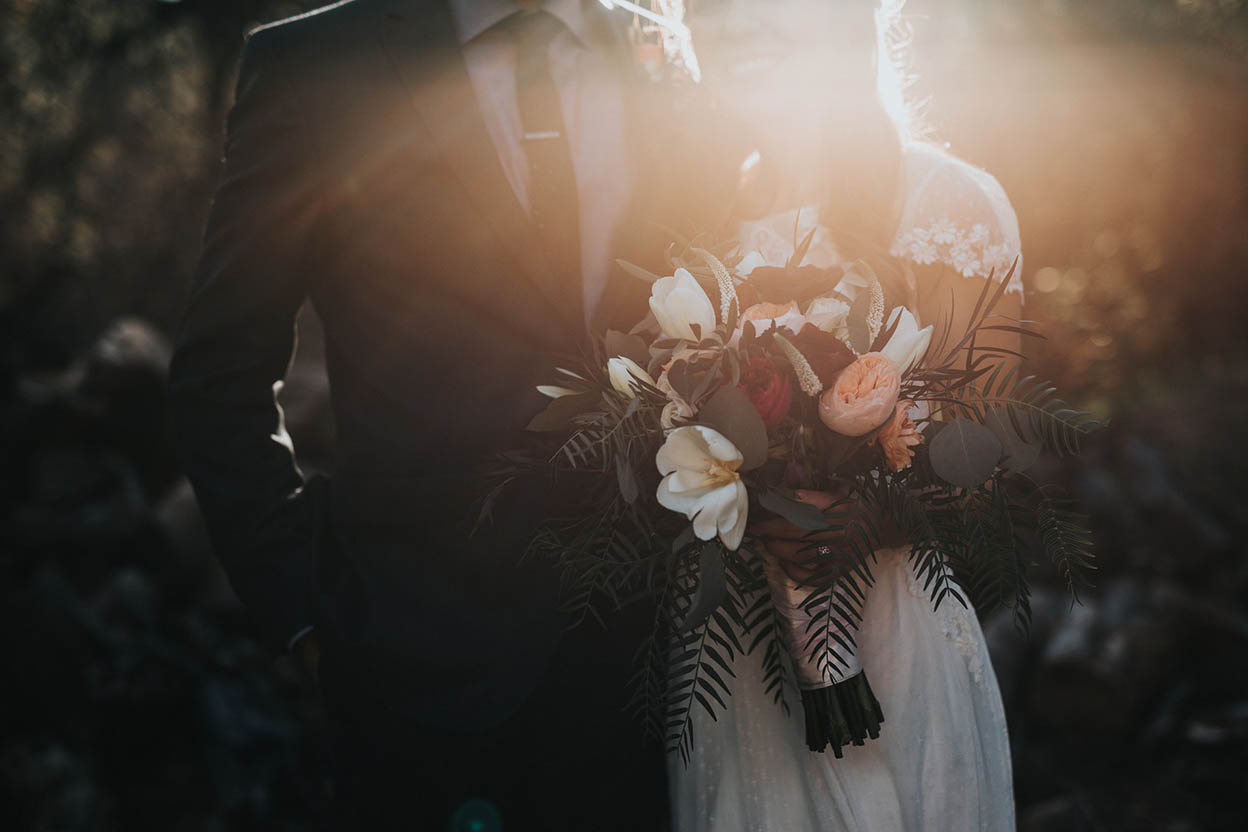
Last Updated on 21/10/2022 by Above Diamond
Last Updated on 18/03/2022 by Wit Sudjaiampun

The fluorescence of a diamond is another important factor outside of the 4C of diamonds which will affect the beauty and the value of the diamond you wear.
If you are a diamond enthusiast, you most likely will already know that most diamond buyers give priority to the 4C’s of Diamond: Carat, Color, Clarity, and Cut.
It is wonderful if you have already educated yourself on those topics.
But if you are reading this article, you are considered luckier than most people because I will be sharing my knowledge on the fluorescence of diamonds today. You may have heard the term “Non Flu” (The flu here refers to fluorescence, not an influenza) but you may still be unclear on what it exactly means.
Because while most people give importance to the Carat, Color, Clarity: IF VVS VS SI and the Cut: 3EX of a diamond, only the minority, and the experts will know what the fluorescence of a diamond is. It is a major factor which dictates the beauty and price of a diamond.
Let us begin…

Diamond Fluorescence is the reaction of a diamond when UV light is shined directly onto them.
In simple terms, UV light can make your teeth whiter and can make your black posters glow in the dark.
This does not mean that diamonds with fluorescence will always appear white because most diamonds with fluorescence (99 out of 100) will reflect blue light.
Now, let us take a look at the criterion the GIA diamond report uses in the fluorescence section.
Fluorescence Grades
The conclusion is that diamonds that provide fluorescence as an extra, will most likely have a lower price point than diamonds without fluorescence.
If you do not have a diamond report, you may not know that the diamond you are holding has fluorescence or not. I advise you to use these simple methods to check your diamond.

Try turning your diamond under white light (You could use your lamp) to find a position where it is most brilliant, if your diamond is fluorescent, you will be able to see a faint blue glow from the diamond facets.
People who use this method will usually be highly experienced because although it may be the most convenient method, it requires a sharp eye that is able to clearly distinguish different colors.

This is an easy observation, the more fluorescence your diamond has, the stronger the blue light that appears to be radiating from the diamond itself. If the diamond is “None Fluorescence”, it will appear dark and unreflective to the blacklight.

If you are interested in testing your diamond for fluorescence, I recommend you to use a tool which is a torch with a real glass lens because of its durability and convenience. I recommend tools such as this → Fluorescent Agent Detection UV 395nm

HRD will state non fluorescent diamonds as – Fluorescence: Nil

If you have lost the diamond report and only have the serial number – that is no problem at all. Because of today’s new technology, every diamond report will have a serial number that is filled with all the details on their online database.
It is a great option for those with a more limited budget, most diamonds with fluorescence will have a lowered price, creating a good opportunity for you to get a bigger carat diamond at a discounted price.
You may get a chance to wear a “whiter” diamond, in the case of second grade colors such as J Color – a little fluorescence could make the diamond appear as white as an I Color diamond.
Your diamond may have a blue tint to it. In some cases, if your diamond has high fluorescence such as “Very Strong”, it may distort your diamond’s color.
Diamond enthusiasts generally do not like Fluorescence in their diamonds. (this is entirely subjective)
In reality, if you see two diamonds with similar GIA diamond report specifications that are sold at different prices even though they have the same 4C – the price difference is most likely caused by diamond fluorescence.
Whether you like your diamond with fluorescence or not is entirely up to you. It depends on how much weight you give this topic. The GIA has confirmed that fluorescence does not affect the diamond’s durability or hardness in any way.
Lastly, the beauty of a diamond should be determined by all of its aspects – it is not possible to consider just one part of the diamond.
If you have any additional questions on the topic of diamond fluorescence, you can always contact us.

Get in touch with one of our diamond specialists.
This website use cookies to enhance your experience and providing the best service from us. You can learn more about our use of cookies in Privacy Policy